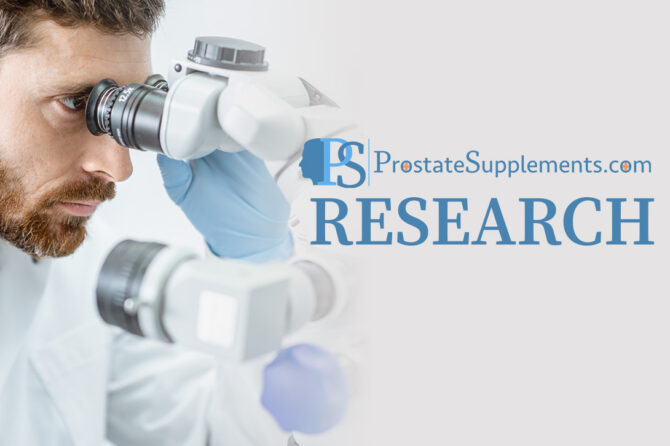
“Opium Antidote” Explained: What It Is, What It Does, and What It Doesn’t Do (Men’s Health, Prostate & Urinary Considerations)
When people say “opium antidote,” they almost always mean naloxone—a fast-acting opioid antagonist that reverses life-threatening opioid overdose (from opium, morphine, heroin, fentanyl, and prescription opioids). It is not a wellness supplement, it is not taken for general health, and there is no evidence it benefits prostate health or urinary function in everyday use. Naloxone’s job is singular and urgent: restore breathing during an opioid overdose until medical care takes over.
1) Definitions & pharmacology—what “opium antidote” actually is
Naloxone is a competitive antagonist at μ-opioid receptors. In overdose, excessive opioid activity suppresses the brain’s respiratory drive; naloxone rapidly displaces opioids from receptors and can restore breathing within minutes. It has no meaningful effect in people without opioids on board. Available forms include pre-packaged nasal sprays and injectables (intramuscular/subcutaneous/IV). Duration is short (often 30–90 minutes), so repeat dosing or medical observation may be needed if long-acting opioids are involved.
Access and status. Naloxone nasal spray is widely distributed through community programs; in many countries, it is cleared for over-the-counter sale to improve access. Availability and rules vary by region.
2) Evidence-based health effects (general)
- Primary, validated indication: Emergency reversal of opioid overdose (heroin, fentanyl, morphine/codeine, methadone, oxycodone, etc.). It is life-saving when administered promptly, ideally alongside basic life support and emergency services.
- Not a chronic therapy: Naloxone is not used to treat pain, mood, sleep, fertility, urinary, or prostate conditions. Its effects last briefly and specifically target opioid receptor blockade during overdose.
3) Men’s health focus
3.1 Opioids and male endocrine function
Chronic opioid exposure can suppress the hypothalamic-pituitary-gonadal axis, producing Opioid-Induced Androgen Deficiency (OPIAD)—lower testosterone with symptoms like reduced libido, fatigue, depressed mood, and possible fertility effects. Reducing/withdrawing opioids can normalize testosterone in some cases; management is individualized. Naloxone is not a treatment for OPIAD; it is for overdose.
3.2 Prostate health
There is no clinical evidence that naloxone improves prostate size, urinary flow in benign prostatic hyperplasia (BPH), or prostate cancer outcomes. It is not indicated in urology for chronic symptoms.
3.3 Urinary tract considerations
Opioids can trigger urinary retention via μ-receptor effects on bladder and sphincter control; this is a known adverse effect, especially in postoperative and neuraxial opioid use. While antagonism of opioid receptors can theoretically relieve opioid-induced retention, using naloxone broadly for that purpose is not standard because it can abruptly reverse analgesia and precipitate withdrawal. Urologic or anesthetic management typically uses alternative strategies (dose adjustment, catheterization, or switching analgesics such as to mixed agonist-antagonists like nalbuphine).
4) Uses & appropriate scenarios
- Indicated use: Suspected opioid overdose marked by slow or stopped breathing, extreme sleepiness/unresponsiveness, blue lips/fingertips, constricted or sometimes normal pupils. Administer naloxone immediately, then seek emergency care; repeat doses may be needed with potent/long-acting opioids.
- Public health use: Widespread community access to naloxone—carried by bystanders, first responders, and family members—reduces fatalities and is a cornerstone of harm-reduction strategies in many regions.
Myth check: “Herbal opium antidotes.” Historical texts and alternative systems sometimes list herbs or camphor as “antidotes.” Modern clinical evidence does not support any botanical agent as a reliable reversal for opioid toxicity. The validated, guideline-supported antidote is naloxone.
5) Ingestion/administration methods (how it’s given)
- Nasal spray: Single-use devices deliver a fixed dose into one nostril. Layperson-friendly; no assembly. If no response in 2–3 minutes and breathing is still inadequate, a second dose can be given (alternate nostrils) while awaiting emergency services.
- Injection (IM/SC/IV): Used by trained responders/clinicians; provides flexible dosing and rapid onset in monitored settings.
Safety profile. Naloxone is not addictive and has no abuse potential. In someone physically dependent on opioids, it may precipitate acute withdrawal (agitation, nausea/vomiting, sweating, tachycardia); these effects are uncomfortable but generally not life-threatening compared to untreated overdose. Observation is needed because naloxone can wear off before the opioid does.
6) Interactions, precautions, and limitations
- Poly-substance overdoses: If sedatives like benzodiazepines or alcohol are also involved, naloxone will notreverse those effects—airway/ventilation support remains critical.
- Potent synthetic opioids (e.g., illicit fentanyl/analogs): May require additional doses because of high receptor affinity. Carry extra doses when feasible.
- Not a substitute for medical care: Even if the person “wakes up,” observation is needed for re-sedation as naloxone wears off.
7) Practical guidance for readers
- Who should consider carrying it? Anyone with a loved one using opioids (prescribed or non-medical), community staff where overdoses might occur, and lay bystanders in higher-risk settings. Local public health sites and pharmacies often provide training and kits.
- Storage/handling: Keep within labeled temperature limits, protect from extreme heat/cold, and check expiration dates. (Even expired naloxone may retain some activity, but replace when possible.)
8) Bottom line for men’s health, prostate, and urinary topics
- Men’s health: Naloxone does not enhance testosterone or sexual health; its role is overdose reversal. Chronic opioid exposure can suppress testosterone (OPIAD); management focuses on opioid stewardship, alternative pain strategies, and endocrine evaluation—not naloxone.
- Prostate health: No evidence of benefit.
- Urinary function: Opioids may cause urinary retention; routine use of naloxone for urinary symptoms is not recommended. Clinicians might adjust analgesics or use other approaches (e.g., nalbuphine switch, catheterization) based on the scenario.
Conclusion
“Opium antidote” is naloxone—a safe, targeted emergency medication that can save a life by reversing opioid overdose. It is not a general health tonic, not a prostate or urinary therapy, and not a men’s wellness supplement. Understanding its true purpose, proper administration, and limitations is essential for responsible, lifesaving use.
Leave a reply

Leave a reply